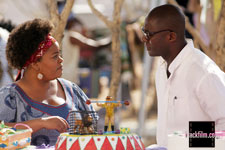
by Sandy | Oct 22, 2009 | Arts, Entertainment and Music, Blogroll, Books, dvd

“Precious Ramotswe“ is Botswana‘s only female private investigator – the main character of the HBO series, now on DVD. Directed by the late Anthony Minghella, “The No. 1 Ladies’ Detective Agency “, was produced for the BBC in 2008 and then shown in the U.S. in 2009. It is based on the popular book series by Alexander McCall Smith.
“Precious” is played by Grammy winner Jill Scott. Tony Award winner Anika Noni Rose and Idris Elba from “The Wire” are also part of the great cast. As in the books, our bush tea drinking, lady sleuth tracks down wayward husbands, missing children and solves village mysteries all the while keeping to the traditions of her culture and maintaining the standards of both Queen Elizabeth and Nelson Mandela (she admires both).
There are 3 DVDs in the set and I enjoyed them all.“The No. 1 Ladies’ Detective Agency“ has charm and heart. Great fun.
BTW: I noticed a few years back that Ms Ramotswe and the author’s name were listed week after week on the SF & Bay area California paper back bestseller list. I discovered that the Botswana detective has a worldwide cult following.
Books in the series:
* 1998 .The No. 1 Ladies’ Detective Agency
* 2000 .Tears Of The Giraffe
* 2001 .Morality for Beautiful Girls
* 2002 .The Kalahari Typing School for Men
* 2004 .The Full Cupboard of Life
* 2004 .In the Company of Cheerful Ladies
* 2006 .Blue Shoes and Happiness
* 2007 .The Good Husband of Zebra Drive
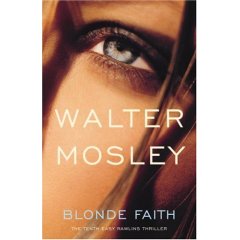
by Sandy | Oct 14, 2009 | Arts, Entertainment and Music, Blogroll, Books, Writers
Blonde Faith, is the final book of the popular series, written by Walter Mosley.
 We were introduced to Easy Rawlins in Devil in a Blue Dress, 1990. (This was also made into a great 1995 movie with Denzel as “Easy” and Don Cheadle as his explosively, lethal buddy “Mouse”.)
We were introduced to Easy Rawlins in Devil in a Blue Dress, 1990. (This was also made into a great 1995 movie with Denzel as “Easy” and Don Cheadle as his explosively, lethal buddy “Mouse”.)
“Easy” becomes a reluctant private investigator in 50’s L.A. and the 10 books span a 20 year journey. What makes the perspective so interesting and different is that in addition to solving “who dunnits” (or, who didn’t) we get a chance to follow the black detective as he maneuvers gingerly thru life making a living, forming relationships, etc. in an often hostile environment. Very entertaining!
Easy Rawlins mysteries
Devil in a Blue Dress (1990)
A Red Death (1991)
White Butterfly (1992)
Black Betty (1994)
A Little Yellow Dog (1996)
Gone Fishin’ (1997)
Bad Boy Brawly Brown (2002)
Six Easy Pieces (2003)
Little Scarlet (2004)
Cinnamon Kiss (2005)
Blonde Faith (2007)
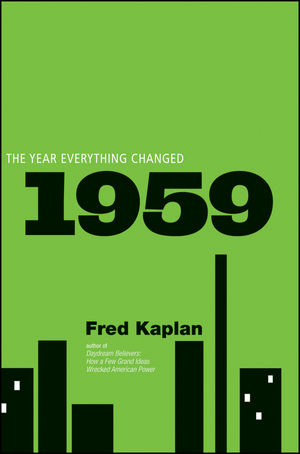
by Sandy | Oct 7, 2009 | Arts, Entertainment and Music, Blogroll, Books, Culture, Museums

An article by Fred Kaplan, “1959: Sex, Jazz, and Datsuns” featured in the June 8, 2009 of New York Magazine determines that 1959 was an important year for music, politics, world dynamics, social issues, and the arts. The 60’s might have gotten more press, but, 1959 was the year of change, innovation, out of the box thinking.
The magazine piece is based on Kaplan’s book, “1959: The Year Everything Changed”. He presents his examples of some of the greatest happenings of this special year and they include:
*Actor turned director John Cassavetes was perhaps the first “Indie” filmmaker with his partly improvised script for his movie “Shadows”.
*Completion of the Guggenheim Museum, designed by Frank Lloyd Wright, changed the NYC sky line on the upper East Side.
*The first micro chip introduced by Texas Instruments.
*The release of the Miles Davis album (they were albums then) “Kinda Blue” (considered by many to be best jazz recording ever).
*Cuban revolutionary Fidel Castro invited to NYC and staying at the St Teresa Hotel in Harlem.
*The emergence of Malcolm X and his conversations on race and politics.
Where were you in 1959?
“1959: The Year Everything Changed”, by Fred Kaplan
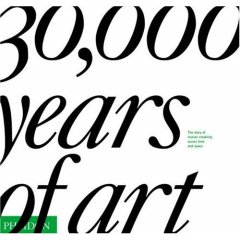
by Sandy | Oct 4, 2009 | Art, Arts, Entertainment and Music, Blogroll, Books, Creativity, Culture
“30,000 YEARS OF ART- THE STORY OF HUMAN CREATIVITY ACROSS TIME AND SPACE” is a book that charts the history of art from 28,000 BC to the present day – 1,000 masterworks of art in chronological order.

“30,000 YEARS OF ART”
A really big book! = 1072 pages, Phaidon Press Inc
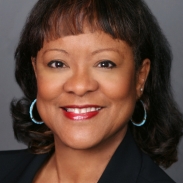
by Sandy | Sep 11, 2009 | Blogroll, Books, Culture, Poem
“There and Back…” is a book of lovely, powerful and very personal poems from Dr. Joel Martin, motivational speaker, entrepreneur, daughter, sister, mother, wife.

Although a slim volume, it is weighty in content. Yes, there are admissions of discomfort and pain that accompanies illness, but the poems are full of thanks and fond remembrances. You have to admire Joel’s desire to handle what has been dealt and to go on to “what’s next”.
Her poetry is a reaffirmation of the value of family, friends, life, love and dreams. All are important whether facing challenges or not. By including photographs in the book, along with the text, Joel shares with us some of the people who have shaped her, while also giving the reader insight into who we all are. We are the sum and part of good times, challenging times, old times, and new times.
We can all relate.
“Wondering how big a dream I can live
Before I’m there and back again”
“There and Back…” a book of poems by Joel Martin, PhD.
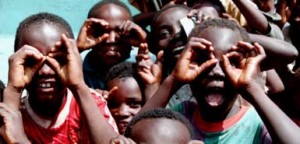
by Sandy | Aug 18, 2009 | Blogroll, Books, Culture
Do you ever get the feeling that westerners do not understand Africa at all? Even after so many years of interference, Europeans still don’t have a clue about the people they colonized. They, along with we Americans, black or white, don’t really understand how a continent beset by such poverty, misery, cruelty and waste can still produce men and women who keep on going. Putting one foot in front of the other, bringing children into their world and expecting good things to happen – somewhere/sometime.
 English correspondent Richard Dowden attempts to explain it in his new book, Africa: Altered States, Ordinary Miracles. He proposes that the African has a different approach and reaction to life, a different appreciation:
English correspondent Richard Dowden attempts to explain it in his new book, Africa: Altered States, Ordinary Miracles. He proposes that the African has a different approach and reaction to life, a different appreciation:
“Terrible times produce strength. Grief enhances joy. Death invigorates living…Africa lives with death and suffering and grief every day, but to be alive is to talk and laugh, eat and drink – dance”.
Africa: Altered States, Ordinary Miracles, by Richard Dowden
Btw: The author also thinks that “only Africans can develop Africa.” (Hmmmm.)




 We were introduced to Easy Rawlins in
We were introduced to Easy Rawlins in 







